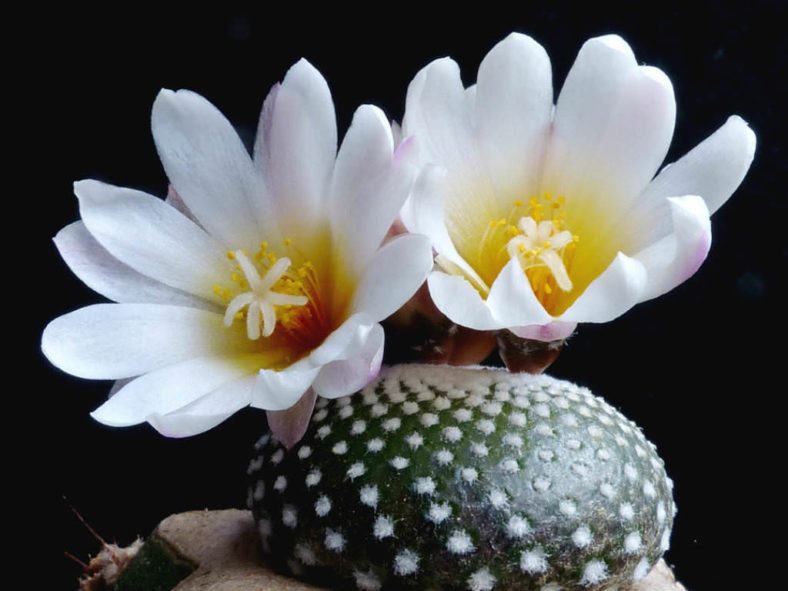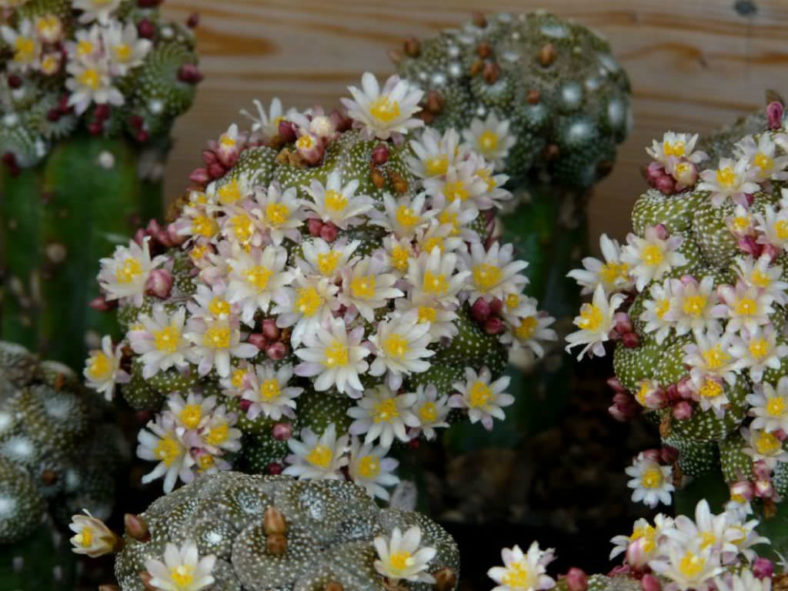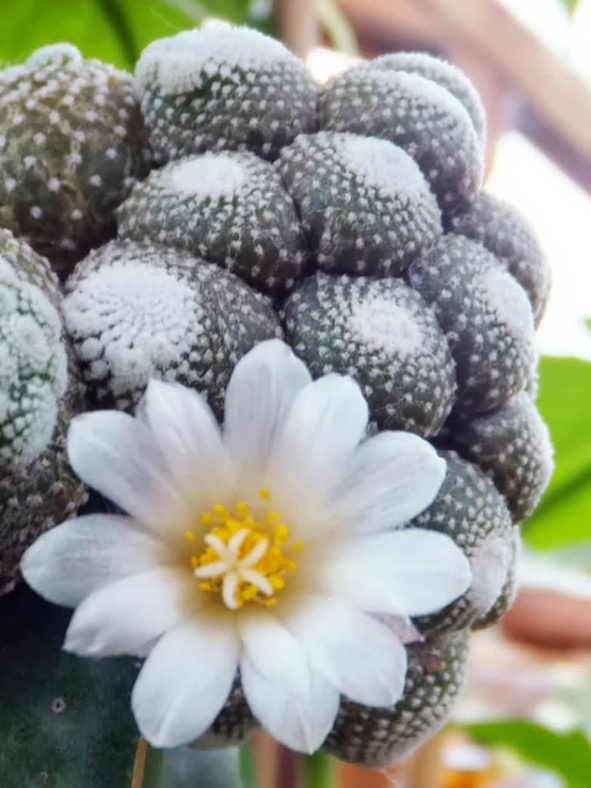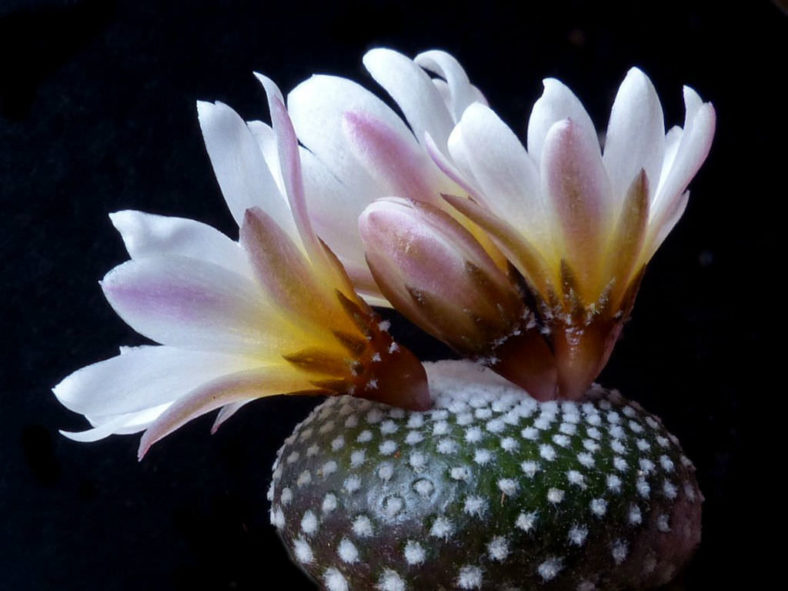Scientific Name
Blossfeldia liliputana Werderm.
Synonym(s)
Blossfeldia atroviridis, Blossfeldia campaniflora, Blossfeldia cryptocarpa, Blossfeldia fechseri, Blossfeldia liliputiana, Blossfeldia minima, Blossfeldia pedicellata, Parodia liliputana
Scientific Classification
Family: Cactaceae
Subfamily: Cactoideae
Tribe: Notocacteae
Genus: Blossfeldia
Etymology
The specific epithet "liliputana" (pronounced "lil-ee-pyoo-TAH-na") means "lilliputian, small enough to inhabit the land of Lilliput in Swift's Gulliver's Travels" and refers to the size of the stems of this species.
Based on the International Code of Botanical Nomenclature rules and recommendations, the spelling of the species name "liliputana" is an orthographic error and needs to be corrected to "liliputiana." No official change has been made for now.
Origin
Blossfeldia liliputana is native to South America in northwestern Argentina (Jujuy, Salta, Tucumán, and Catamarca Provinces) and southern Bolivia (Potosí Department).
Description
Blossfeldia liliputana, also known as Blossfeldia liliputiana, is a dwarf cactus with grey-green, disk-shaped stems with tufts of white wool and without ribs and spines. It can grow solitary or in clumps, with stems typically only 0.5 inches (1.3 cm) in diameter.
The white or pink flowers appear from late spring to early summer and can reach a length of 0.6 inches (1.5 cm) and a diameter of 0.3 inches (0.7 cm).
Blossfeldia liliputana is the world's most miniature known cactus.

How to Grow and Care for Blossfeldia liliputana
Hardiness: USDA hardiness zone 8b to 10b: from 15°F (-9.4°C) to 40°F (4.4°C).
The Blossfeldia is much easier to grow when grafted. However, due to their slow growth rate, they are often grafted, which causes them to grow very quickly and offset heavily, but lose their characteristic disc-like shape, becoming quite globular and bloated. In this case, the minimum acceptable temperatures should take into account the requirements for the rootstock.
Water during the growing period. The thin, fibrous roots suffer in high humidity. Therefore, the plant should be watered when the surrounding terrain is dry. But avoid wetting the bodies of these plants while they are in sunlight. A wet plant in the sunlight can cause sunburn, leading to scars, fungal infections, and death. Keep dry as soon as the temperature drops, and maintain a perfectly dry environment in winter at 40°F to 60°F (4°C to 15°C). Preferably not to water on overcast, humid, or cold winter days.
See more at: How to Grow and Care for Blossfeldia.
Links
- Back to genus Blossfeldia
- Succupedia: Browse succulents by Scientific Name, Common Name, Genus, Family, USDA Hardiness Zone, Origin, or cacti by Genus
Photo Gallery
Click on a photo to see a larger version.


